What nuclear energy has to do with the battle against climate change
This post originally appeared at Brookings.
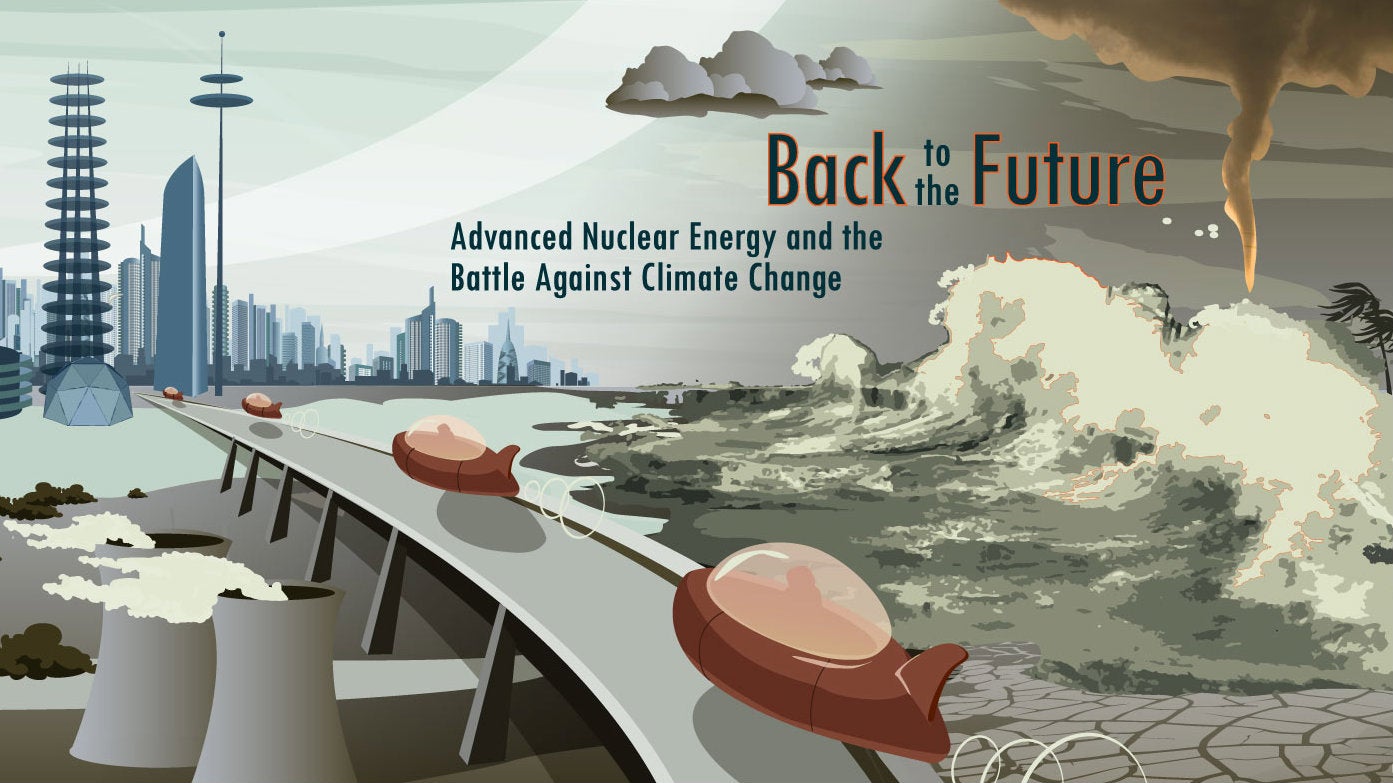

This post originally appeared at Brookings.

The Nuclear Science and Engineering Library at MIT is not a place where most people would go to unwind. It’s filled with journals that have articles with titles like “Longitudinal double-spin asymmetry of electrons from heavy flavor decays in polarized p + p collisions at √s = 200 GeV.” But nuclear engineering PhD candidates relax in ways all their own. In the winter of 2009, two of those candidates, Leslie Dewan and Mark Massie, were studying for their qualifying exams—a brutal rite of passage—and had a serious need to decompress.
To clear their heads after long days and nights of reviewing neutron transport, the mathematics behind thermohydraulics, and other such subjects, they browsed through the crinkled pages of journals from the first days of their industry—the glory days. Reading articles by scientists working in the 1950s and ‘60s, they found themselves marveling at the sense of infinite possibility those pioneers had brought to their work, in awe of the huge outpouring of creative energy. They were also curious about the dozens of different reactor technologies that had once been explored, only to be abandoned when the funding dried up.
The early nuclear researchers were all housed in government laboratories—at Oak Ridge in Tennessee, at the Idaho National Lab in the high desert of eastern Idaho, at Argonne in Chicago, and Los Alamos in New Mexico. Across the country, the nation’s top physicists, metallurgists, mathematicians, and engineers worked together in an atmosphere of feverish excitement, as government support gave them the freedom to explore the furthest boundaries of their burgeoning new field. Locked in what they thought of as a life-or-death race with the Soviet Union, they aimed to be first in every aspect of scientific inquiry, especially those that involved atom splitting.
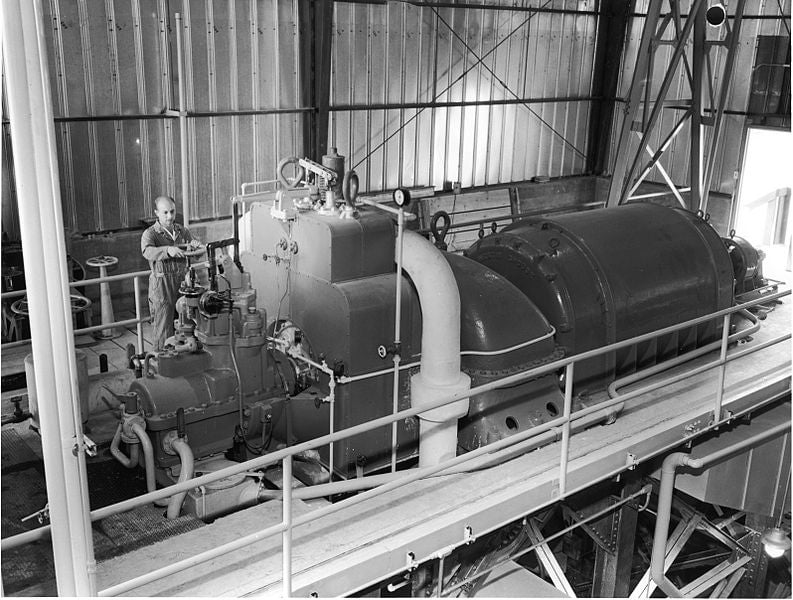
Though nuclear engineers were mostly men in those days, Leslie imagined herself working alongside them, wearing a white lab coat, thinking big thoughts. “It was all so fresh, so exciting, so limitless back then,” she told me. “They were designing all sorts of things: nuclear-powered cars and airplanes, reactors cooled by lead. Today, it’s much less interesting. Most of us are just working on ways to tweak basically the same light water reactor we’ve been building for 50 years.”
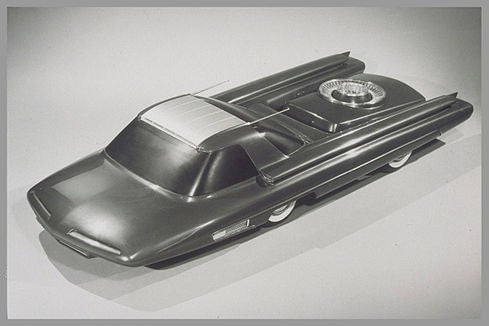
But because of something that she and Mark stumbled across in the library during one of their forays into the old journals, Leslie herself is not doing that kind of tweaking—she’s trying to do something much more radical. One night, Mark showed Leslie a 50-year-old paper from Oak Ridge about a reactor powered not by rods of metal-clad uranium pellets in water, like the light water reactors of today, but by a liquid fuel of uranium mixed into molten salt to keep it at a constant temperature. The two were intrigued, because it was clear from the paper that the molten salt design could potentially be constructed at a lower cost and shut down more easily in an emergency than today’s light water reactors. And the molten salt design wasn’t just theoretical—Oak Ridge had built a real reactor, which ran from 1965-1969, racking up 20,000 operating hours.
The 1960s-era salt reactor was interesting, but at first blush it didn’t seem practical enough to revive. It was bulky, expensive, and not very efficient. Worse, it ran on uranium enriched to levels far above the modern legal limit for commercial nuclear power. Most modern light water reactors run on 5% enriched uranium, and it is illegal under international and domestic law for commercial power generators to use anything above 20%, because at levels that high uranium can be used for making weapons. The Oak Ridge molten salt reactor needed uranium enriched to at least 33%, possibly even higher.
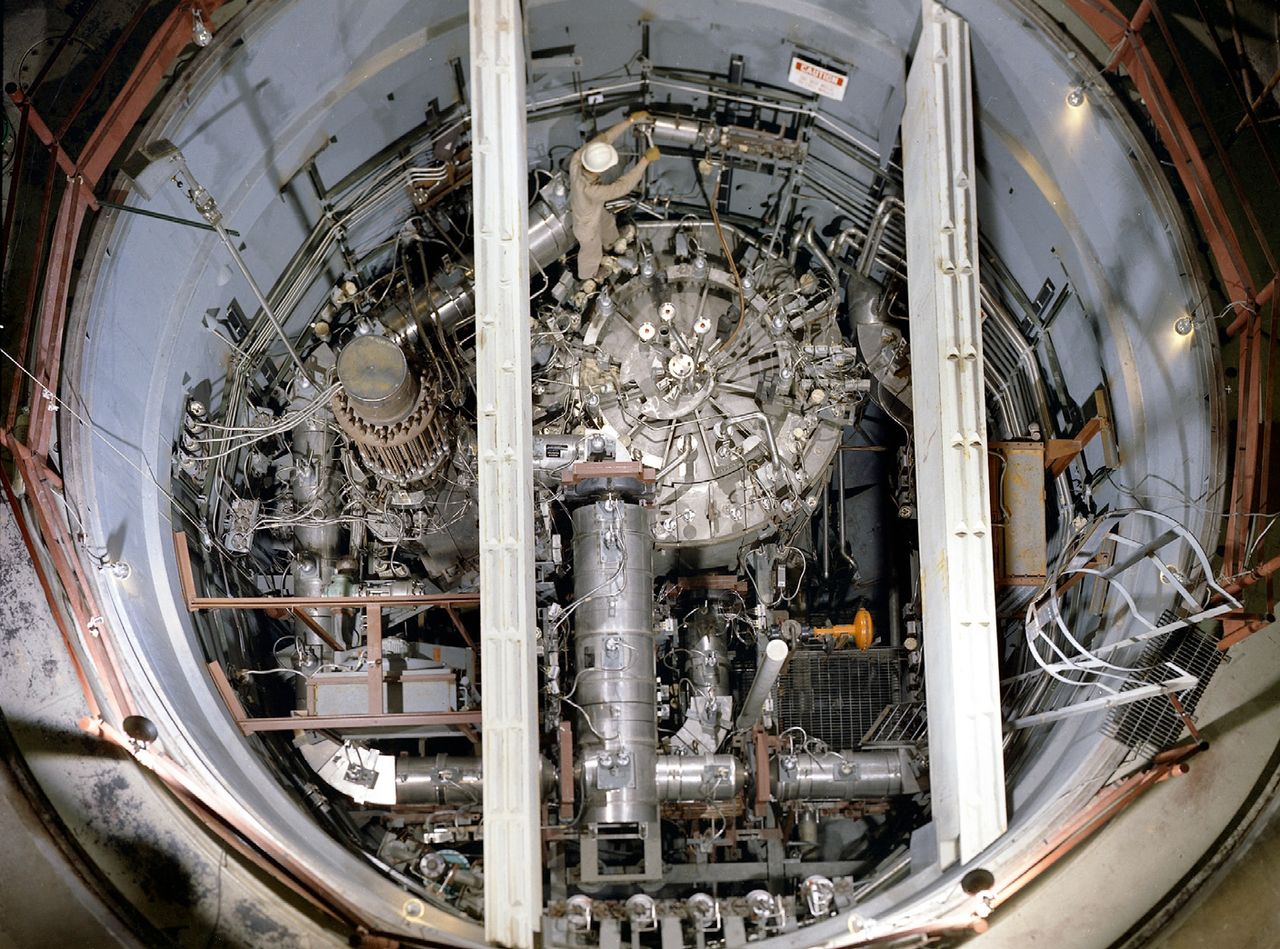
But they were aware that smart young engineers were considering applying modern technology to several other decades-old reactor designs from the dawn of the nuclear age, and this one seemed to Leslie and Mark to warrant a second look. After finishing their exams, they started searching for new materials that could be used in a molten salt reactor to make it both legal and more efficient. If they could show that a modified version of the old design could compete with—or exceed—the performance of today’s light water reactors, they knew they might have a very interesting project on their hands.
First, they took a look at the fuel. By using different, more modern materials, they had a theory that they could get the reactor to work at very low enrichment levels. Maybe, they hoped, even significantly below 5%.
There was a good reason to hope. Today’s reactors produce a significant amount of nuclear “waste,” many tons of which are currently sitting in cooling pools and storage canisters at plant sites all over the country. The reason that the waste has to be managed so carefully is that when they are discarded, the uranium fuel rods contain about 95% of the original amount of energy and remain both highly radioactive and hot enough to boil water. It dawned on Leslie and Mark that if they could chop up the rods and remove their metal cladding, they might have a “killer app”—a sector-redefining technology like Uber or Airbnb—for their molten salt reactor design, enabling it to run on the waste itself.
By late 2010, the computer modeling they were doing suggested this might indeed work. When Leslie left for a trip to Egypt with her family in January 2011, Mark kept running simulations back at MIT. On January 11, he sent his partner an email that she read as she toured the sites of Alexandria. The note was highly technical, but said in essence that Mark’s latest work confirmed their hunch—they could indeed make their reactor run on nuclear waste. Leslie looked up from her phone and said to her brother: “I need to go back to Boston.”
Watch Leslie Dewan and Mark Massie on the future of nuclear energy:
Climate change spurs new call for nuclear energy
In the days when Leslie and Mark were studying for their exams, it may have seemed that the Golden Age of nuclear energy in the United States had long since passed. Not a single new commercial reactor project had been built here in over 30 years. Not only were there no new reactors, but with the fracking boom having produced abundant supplies of cheap natural gas, some electric utilities were shutting down their aging reactors rather than doing the costly upgrades needed to keep them online.
As the domestic reactor market went into decline, the American supply chain for nuclear reactor parts withered. Although almost all commercial nuclear technology had been discovered in the United States, our foreign competitors eventually purchased much of our nuclear industrial base—Toshiba bought Westinghouse and Hitachi bought GE’s nuclear arm. Not surprisingly, as the nuclear pioneers aged and young scientists stayed away from what seemed to be a dying industry, the number of nuclear engineers also dwindled over the decades. In addition, the American regulatory system, long considered the gold standard for western nuclear systems, began to lose influence as other countries pressed ahead with new reactor construction while the US market remained dormant.
Yet something has changed in recent years. Leslie and Mark are not really outliers. All of a sudden, a flood of young engineers has entered the field. More than 1,164 nuclear engineering degrees were awarded in 2013—a 160% increase over the number granted a decade ago.
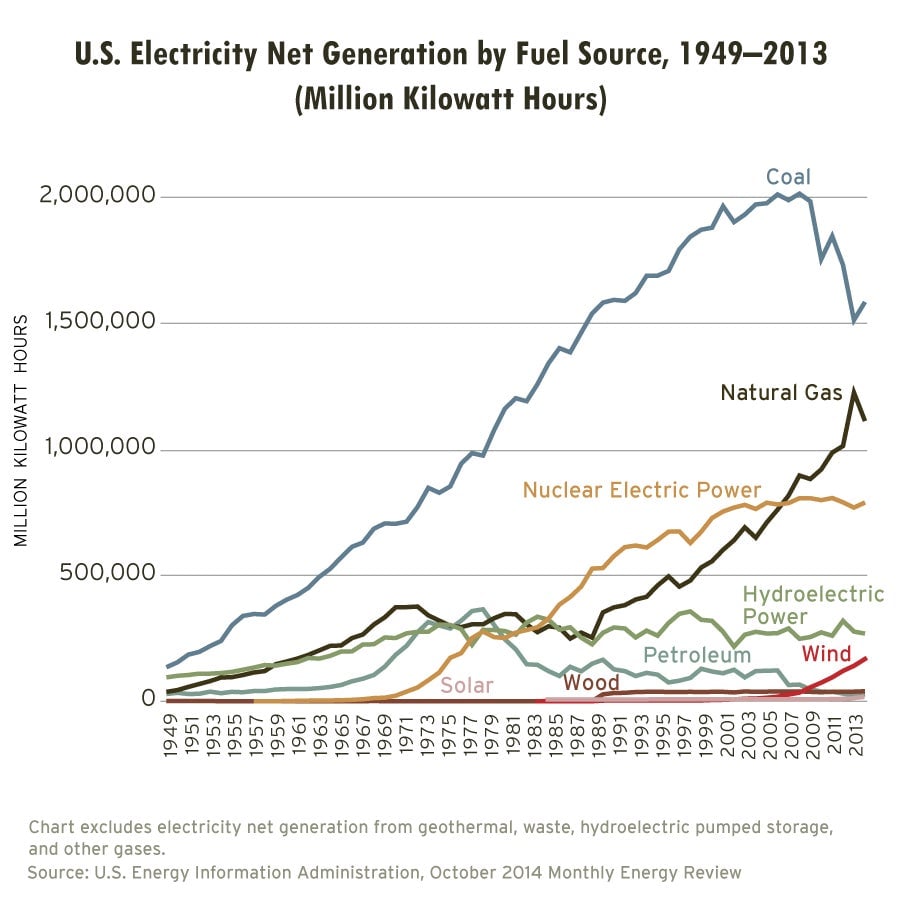
So what, after a 30-year drought, is drawing smart young people back to the nuclear industry? The answer is climate change. Nuclear energy currently provides about 20% of the electric power in the United States, and it does so without emitting any greenhouse gases. Compare that to the amount of electricity produced by the other main non-emitting sources of power, the so-called “renewables”—hydroelectric (6.8%), wind (4.2%) and solar (about one quarter of a percent). Not only are nuclear plants the most important of the non-emitting sources, but they provide baseload—“always there”—power, while most renewables can produce electricity only intermittently, when the wind is blowing or the sun is shining.
In 2014, the Intergovernmental Panel on Climate Change, a United Nations-based organization that is the leading international body for the assessment of climate risk, issued a desperate call for more non-emitting power sources. According to the IPCC, in order to mitigate climate change and meet growing energy demands, the world must aggressively expand its sources of renewable energy, and it must also build more than 400 new nuclear reactors in the next 20 years—a near-doubling of today’s global fleet of 435 reactors. However, in the wake of the tsunami that struck Japan’s Fukushima Daichi plant in 2011, some countries are newly fearful about the safety of light water reactors. Germany, for example, vowed to shutter its entire nuclear fleet.
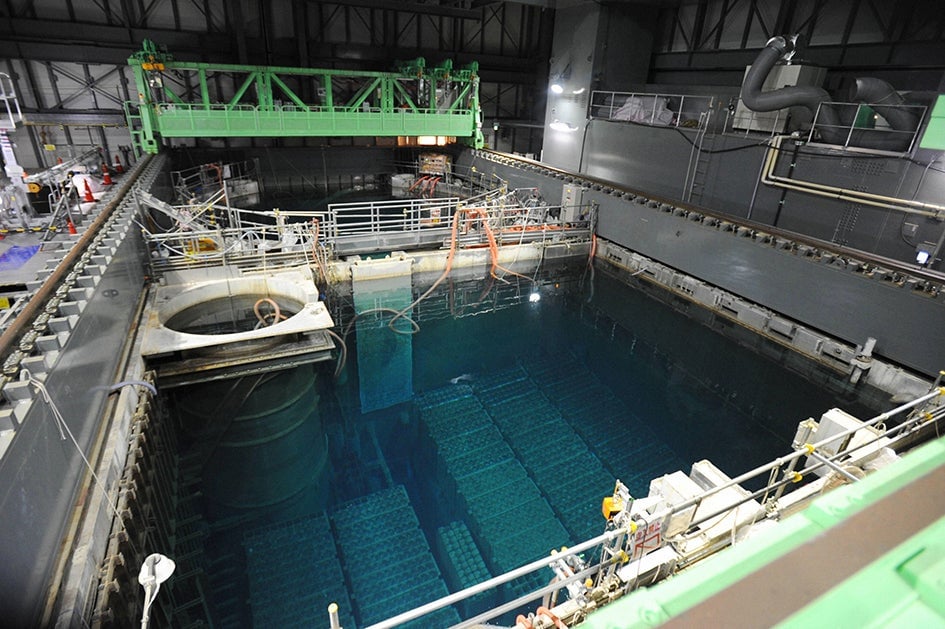
The young scientists entering the nuclear energy field know all of this. They understand that a major build-out of nuclear reactors could play a vital role in saving the world from climate disaster. But they also recognize that for that to happen, there must be significant changes in the technology of the reactors, because fear of light water reactors means that the world is not going to be willing to fund and build enough of them to supply the necessary energy. That’s what had sent Leslie and Mark into the library stacks at MIT—a search for new ideas that might be buried in the old designs.
They have now launched a company, Transatomic, to build the molten salt reactor they see as a viable answer to the problem. And they’re not alone—at least eight other startups have emerged in recent years, each with its own advanced reactor design. This new generation of pioneers is working with the same sense of mission and urgency that animated the discipline’s founders. The existential threat that drove the men of Oak Ridge and Argonne was posed by the Soviets; the threat of today is from climate change.
Heeding that sense of urgency, investors from Silicon Valley and elsewhere are stepping up to provide funding. One startup, TerraPower, has the backing of Microsoft co-founder Bill Gates and former Microsoft executive Nathan Myhrvold. Another, General Fusion, has raised $32 million from investors, including nearly $20 million from Amazon founder Jeff Bezos. And LPP Fusion has even benefited, to the tune of $180,000, from an Indiegogo crowd-funding campaign.
Mark and Leslie’s Transatomic has also caught the eye of the investor community. The first investor to show real interest was Ray Rothrock, a major Silicon Valley venture capitalist (VC) and an MIT-trained nuclear engineer. Leslie and Mark cornered Rothrock when he was visiting MIT in March 2011 to speak to the nuclear engineering program and to check on another investment. Evidently, he was persuaded—Rothrock himself has invested substantially in Transatomic. After Transatomic won the top prize at the 2013 “Innovation Summit,” which was run by the Department of Energy and judged by a panel of venture capitalists, PayPal co-founder Peter Thiel and his Founder’s Fund VC group awarded $2 million to Transatomic to allow them to begin the large-scale experiments they will need to test their design concepts.
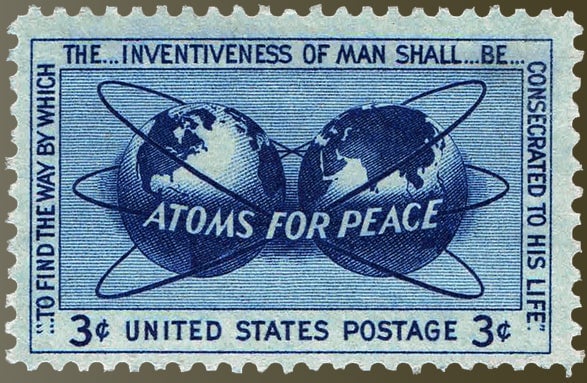
All of the new blood, new ideas, and new money are having a real effect. In the last several years, a field that had been moribund has become dynamic again, once more charged with a feeling of boundless possibility and optimism.
But one huge source of funding and support enjoyed by those first pioneers has all but disappeared: The US government.
From “Atoms for Peace” to Chernobyl
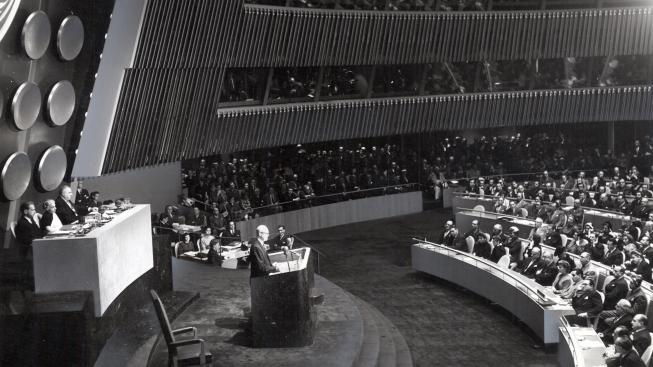
In the early days of nuclear energy development, the government led the charge, funding the research, development, and design of 52 different reactors at the Idaho laboratory’s National Reactor Testing Station alone, not to mention those that were being developed at other labs, like the one that was the subject of the paper Leslie and Mark read. With the help of the government, engineers were able to branch out in many different directions.
Soon enough, the designs were moving from paper to test reactors to deployment at breathtaking speed. The tiny Experimental Breeder Reactor 1, which went online in December 1951 at the Idaho National Lab, ushered in the age of nuclear energy.
Just two years later, President Dwight D. Eisenhower made his “Atoms for Peace” speech to the UN, in which he declared that “The United States knows that peaceful power from atomic energy is no dream of the future. The capability, already proved, is here today.” Less than a year after that, Eisenhower waved a ceremonial “neutron wand” to signal a bulldozer in Shippingport, Pennsylvania to begin construction of the nation’s first commercial nuclear power plant.
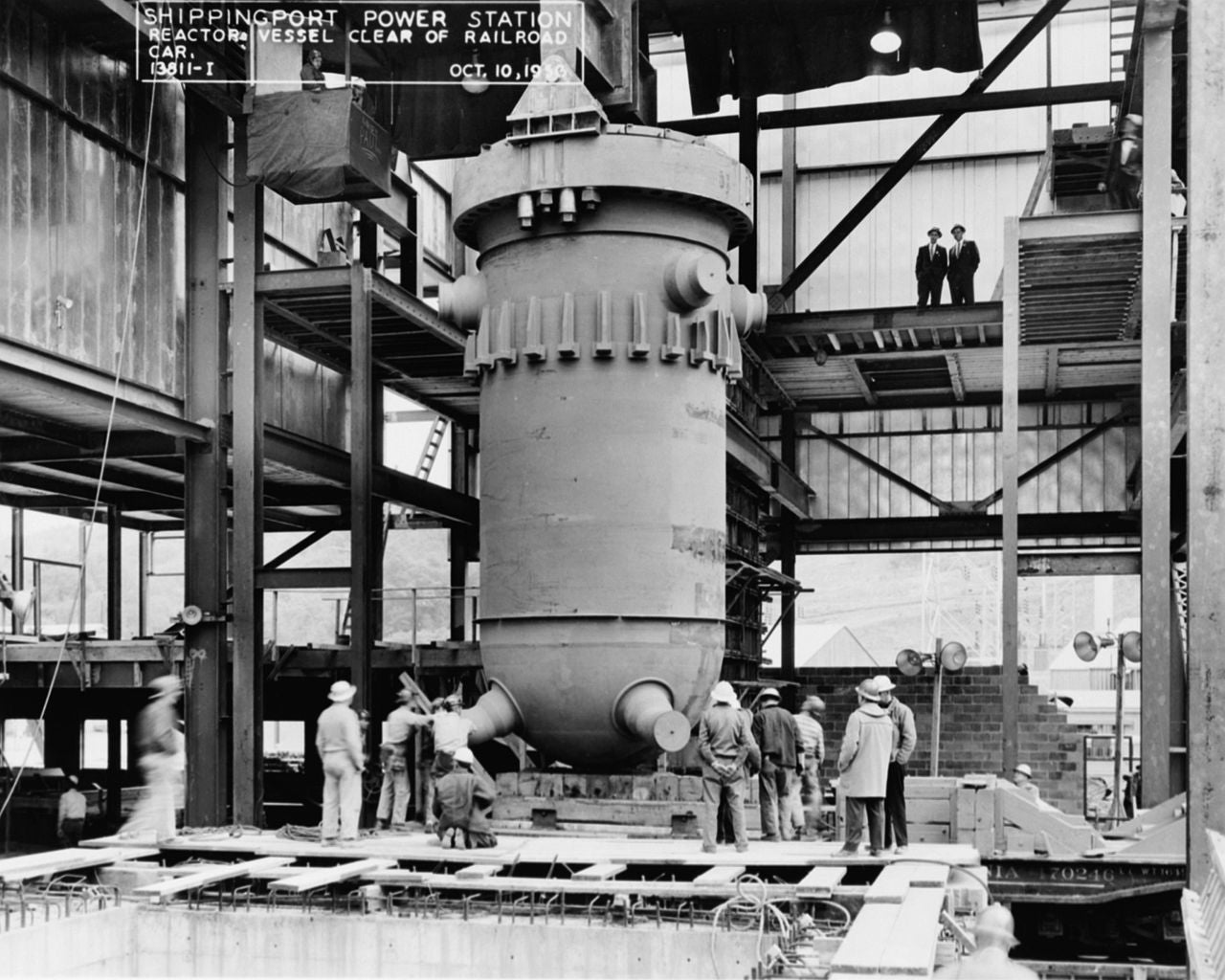
By 1957 the Atoms for Peace program had borne fruit, and Shippingport was open for business. During the years that followed, the government, fulfilling Eisenhower’s dream, not only funded the research, it ran the labs, chose the technologies, and, eventually, regulated the reactors.
The US would soon rapidly surpass not only its Cold War enemy, the Soviet Union, which had brought the first significant electricity-producing reactor online in 1954, but every other country seeking to deploy nuclear energy, including France and Canada. Much of the extraordinary progress in America’s development of nuclear energy technology can be credited to one specific government institution—the US Navy.
Admiral Hyman G. Rickover, the “Father of the Nuclear Navy,” was an engineer who received training in nuclear power at Oak Ridge, Tennessee. Once he decided, in the early 1950s, to develop the world’s first nuclear submarine, he had to choose among the many reactor designs then under development, including light water, molten salt, and others. Rickover opted for the light water-cooled reactor (one reason is that molten salt and seawater don’t mix). And because Rickover also oversaw the development of the Shippingport reactor, the light water reactor design quickly became the standard, triumphing over the designs of ‘50s-era engineers like Alvin Weinberg, the director of research at Oak Ridge, who had been developing a molten salt thorium reactor.
Rickover’s choice has had enormous implications. To this day, the light water reactor remains the standard—the only type of reactor built or used for energy production in the United States and in most other countries as well. Research on other reactor types (like molten salt and lead) essentially ended for almost six decades, not to be revived until very recently.
Once light water reactors got the nod, the Atomic Energy Commission endorsed a cookie-cutter-like approach to building additional reactors that was very enticing to energy companies seeking to enter the atomic arena. Having a standardized light water reactor design meant quicker regulatory approval, economies of scale, and operating uniformity, which helped control costs and minimize uncertainty. And there was another upside to the light water reactors, at least back then: they produced a byproduct—plutonium. These days, we call that a problem: the remaining fissile material that must be protected from accidental discharge or proliferation and stored indefinitely. In the Cold War 1960s, however, that was seen as a benefit, because the leftover plutonium could be used to make nuclear weapons.
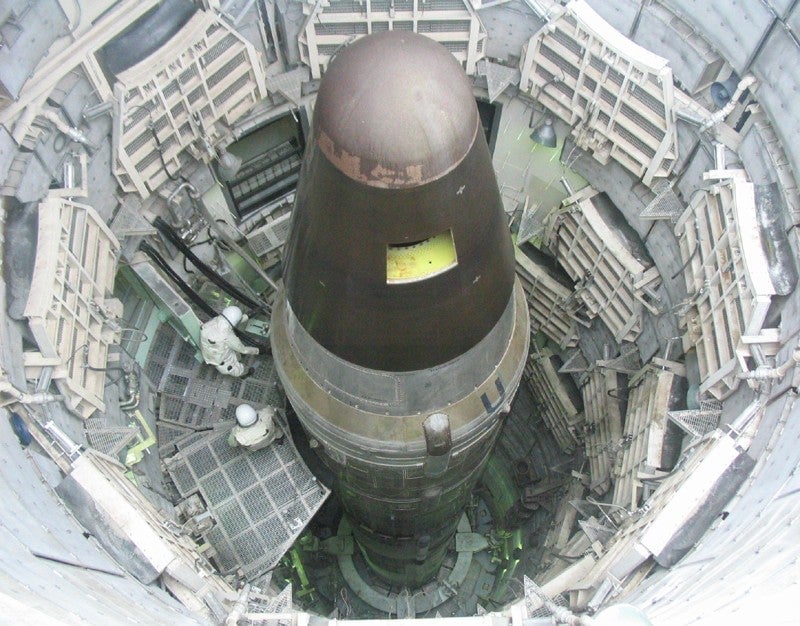
With the triumph of the light water reactor came a massive expansion of the domestic and global nuclear energy industries. In the 1960s and ‘70s, America’s technology, design, supply chain, and regulatory system dominated the production of all civilian nuclear energy on this side of the Iron Curtain. US engineers drew the plans, US companies like Westinghouse and GE built the plants, US factories and mills made the parts, and the US government’s Atomic Energy Commission set the global safety standards.
In this country, we built more than 100 light water reactors for commercial power production. Though no two American plants were identical, all of the plants constructed in that era were essentially the same—light water reactors running on uranium enriched to about 4%. By the end of the 1970s, in addition to the 100-odd reactors that had been built, 100 more were in the planning or early construction stage.
And then everything came to a screeching halt, thanks to a bizarre confluence of Hollywood and real life.
On March 16, 1979, The China Syndrome—starring Jane Fonda, Jack Lemmon, and Michael Douglas—hit theaters, frightening moviegoers with an implausible but well-told tale of a reactor meltdown and catastrophe, which had the potential, according to a character in the film, to render an area “the size of Pennsylvania permanently uninhabitable.” Twelve days later, the Number 2 reactor at the Three Mile Island plant in central Pennsylvania suffered an accident that caused the release of some nuclear coolant and a partial meltdown of the reactor core. After the governor ordered the evacuation of “pregnant women and preschool age children,” widespread panic followed, and tens of thousands of people fled in terror.
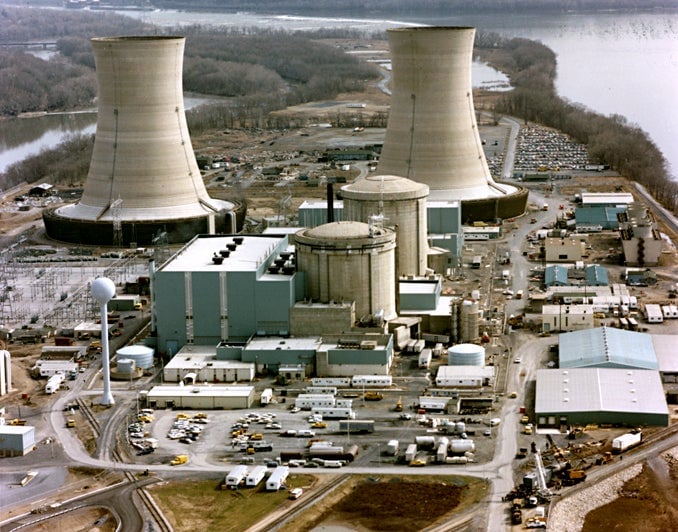
But both the evacuation order and the fear were unwarranted. A massive investigation revealed that the release of radioactive materials was minimal and had posed no risk to human health. No one was injured or killed at Three Mile Island. What did die that day was America’s nuclear energy leadership.
After Three Mile Island, plans for new plants then on the drawing board were scrapped or went under in a blizzard of public recrimination, legal action, and regulatory overreach by federal, state, and local officials. For example, the Shoreham plant on Long Island, which took nearly a decade to build and was completed in 1984, never opened, becoming one of the biggest and most expensive white elephants in human history.
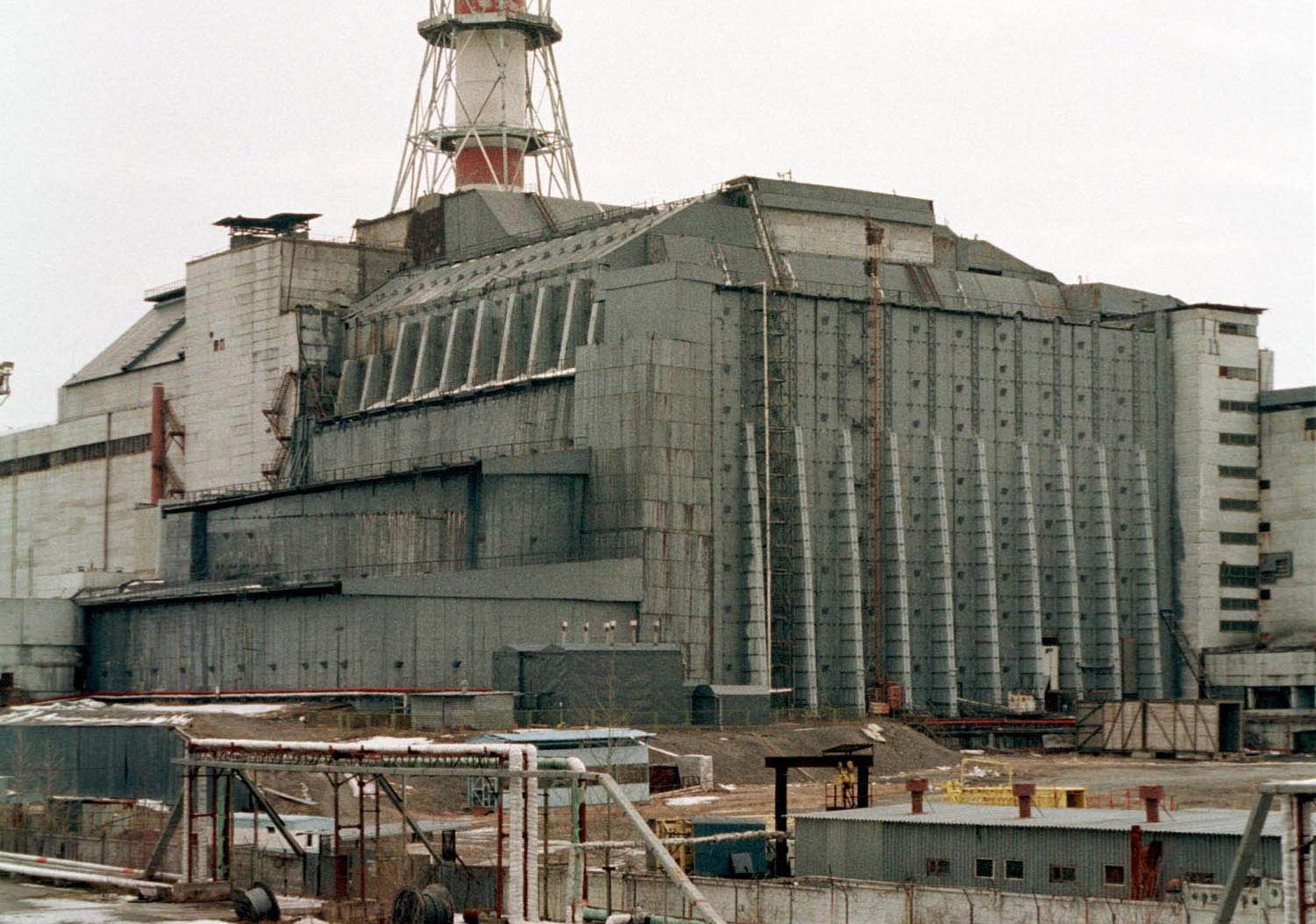
The final, definitive blow to American nuclear energy was delivered in 1986, when the Soviets bungled their way into a genuine nuclear energy catastrophe: the disaster at the Chernobyl plant in Ukraine. It was man-made in its origin (risky decisions made at the plant led to the meltdown, and the plant itself was badly designed); widespread in its scope (Soviet reactors had no containment vessel, so the roof was literally blown off, the core was exposed, and a radioactive cloud covered almost the whole of Europe); and lethal in its impact (rescuers and area residents were lied to by the Soviet government, which denied the risk posed by the disaster, causing many needless deaths and illnesses and the hospitalization of thousands).
After Chernobyl, it didn’t matter that American plants were infinitely safer and better run. This country, which was awash in cheap and plentiful coal, simply wasn’t going to build more nuclear plants if it didn’t have to.
But now we have to.
The terrible consequences of climate change mean that we must find low- and zero-emitting ways of producing electricity.
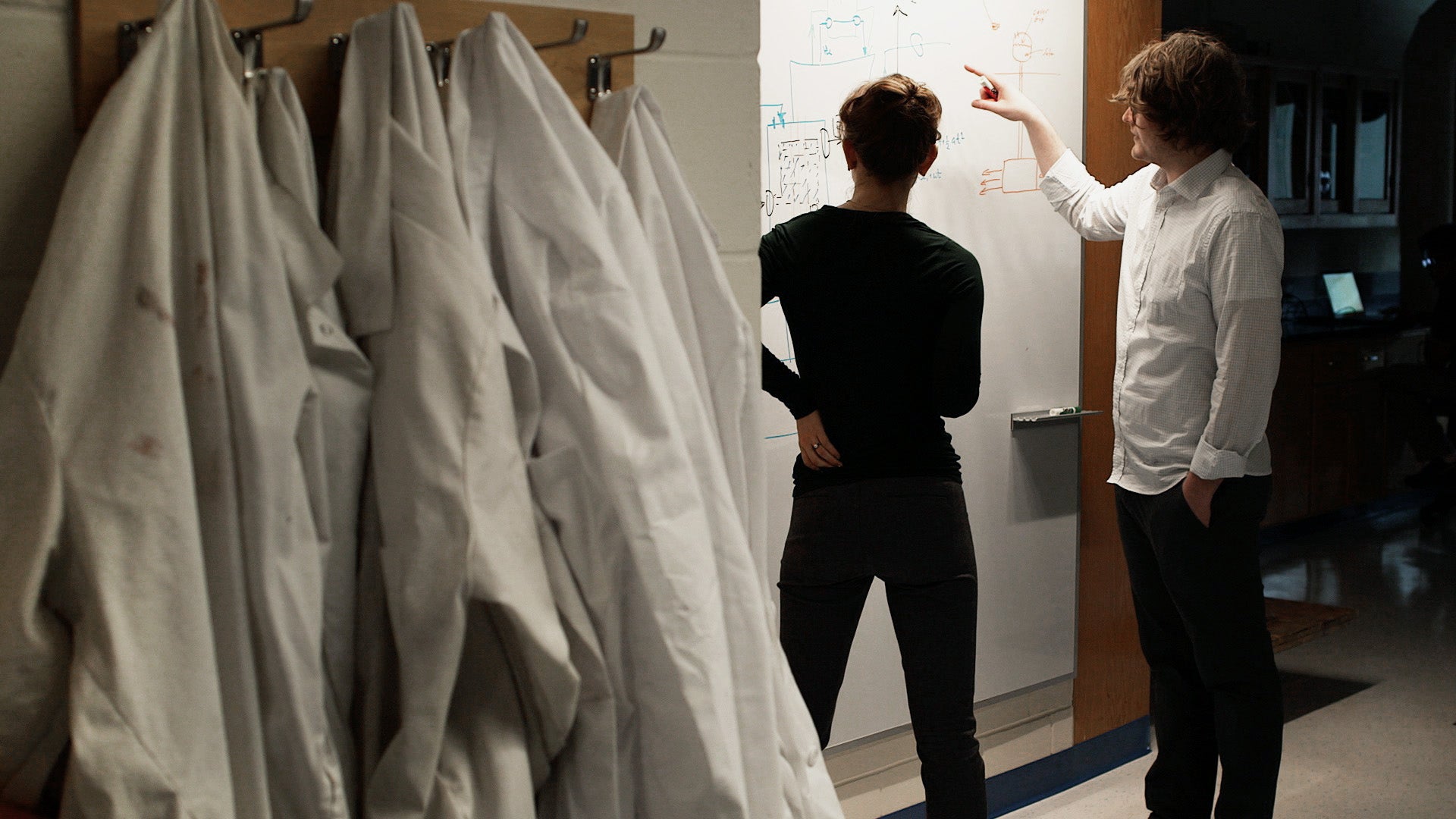
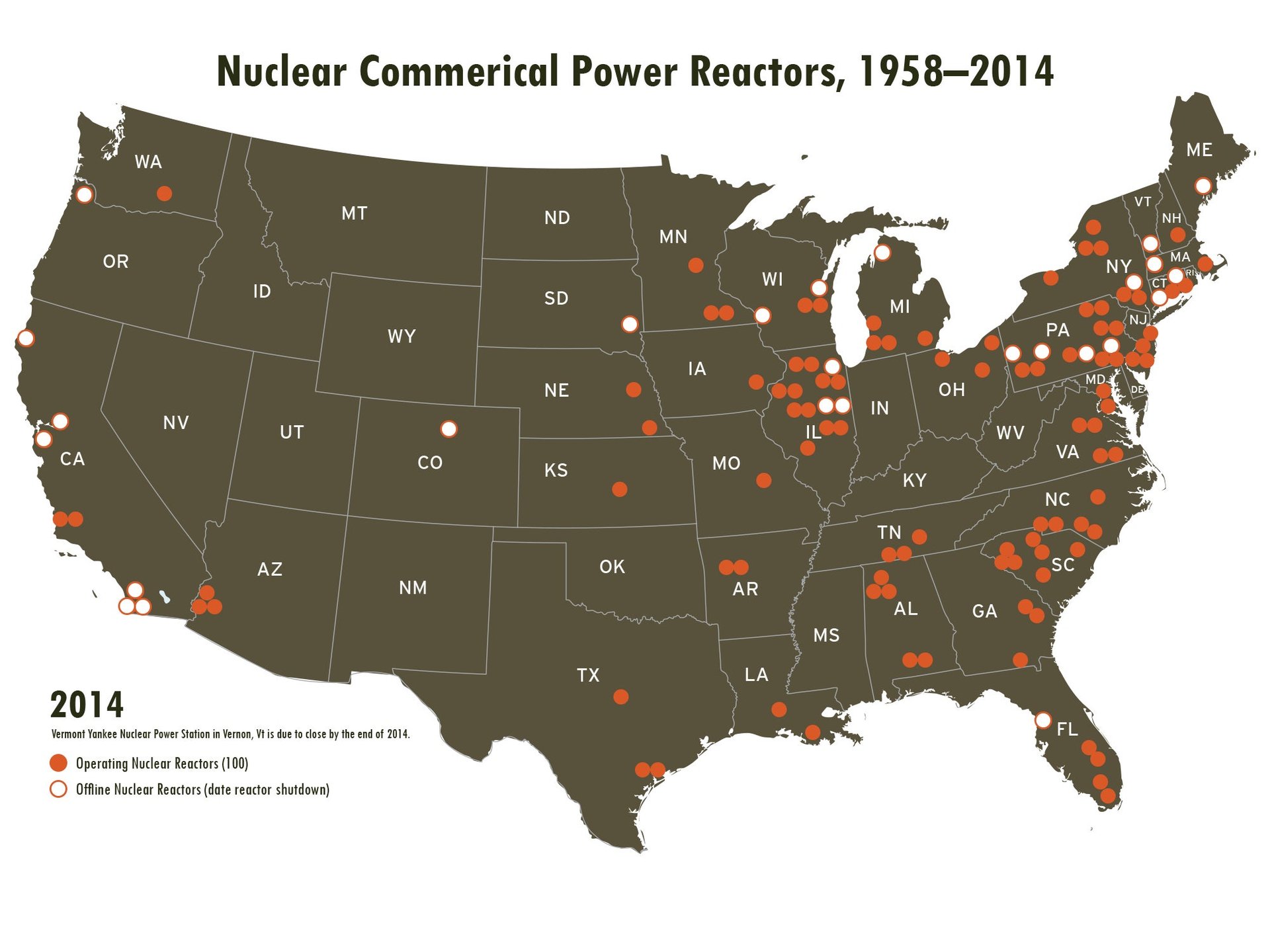
The return of nuclear pioneers
Five new light water reactors are currently under construction in the US, but the safety concerns about them (largely unwarranted as they are) as well as their massive size, cost, complexity, and production of used fuel (“waste”) mean that there will probably be no large-scale return to the old style of reactor. What we need now is to go back to the future and build some of those plants that they dreamed up in the labs of yesterday.
Which is what Leslie and Mark are trying to do with Transatomic. Once they had their breakthrough moment and realized that they could fuel their reactor on nuclear waste material, they began to think seriously about founding a company. So they started doing what all entrepreneurial MIT grads do—they talked to venture capitalists. Once they got their initial funding, the two engineers knew that they needed someone with business experience, so they hired a CEO, Russ Wilcox, who had built and sold a very successful e-publishing company. At the time they approached him, Wilcox was in high demand, but after hearing Leslie and Mark give a TEDx talk about the environmental promise of advanced nuclear technology, he opted to go with Transatomic—because he thought it could help save the world.
In their talk, the two founders had explained that in today’s light water reactors, metal-clad uranium fuel rods are lowered into water in order to heat it and create steam to run the electric turbines. But the water eventually breaks down the metal cladding and then the rods must be replaced. The old rods become nuclear waste, which will remain radioactive for up to 100,000 years, and, under the current American system, must remain in storage for that period.
The genius of the Transatomic design is that, according to Mark’s simulations, their reactor could make use of almost all of the energy remaining in the rods that have been removed from the old light water reactors, while producing almost no waste of their own—just 2.5% as much as produced by a typical light water reactor. If they built enough molten salt reactors, Transatomic could theoretically consume not just the roughly 70,000 metric tons of nuclear waste currently stored at US nuclear plants, but also the additional 2,000 metric tons that are produced each year.
Like all molten salt reactors, the Transatomic design is extraordinarily safe as well. That is more important than ever after the terror inspired by the disaster that occurred at the Fukushima light water reactor plant in 2011. When the tsunami knocked out the power for the pumps that provided the water required for coolant, the Fukushima plant suffered a partial core meltdown. In a molten salt reactor, by contrast, no externally supplied coolant would be needed, making it what Transatomic calls “walk away safe.” That means that, in the event of a power failure, no human intervention would be required; the reactor would essentially cool itself without water or pumps. With a loss of external electricity, the artificially chilled plug at the base of the reactor would melt, and the material in the core (salt and uranium fuel) would drain to a containment tank and cool within hours.
Leslie and Mark have also found materials that would boost the power output of a molten salt reactor by 30 times over the 1960s model. Their redesign means the reactor might be small and efficient enough to be built in a factory and moved by rail. (Current reactors are so large that they must be assembled on site.)
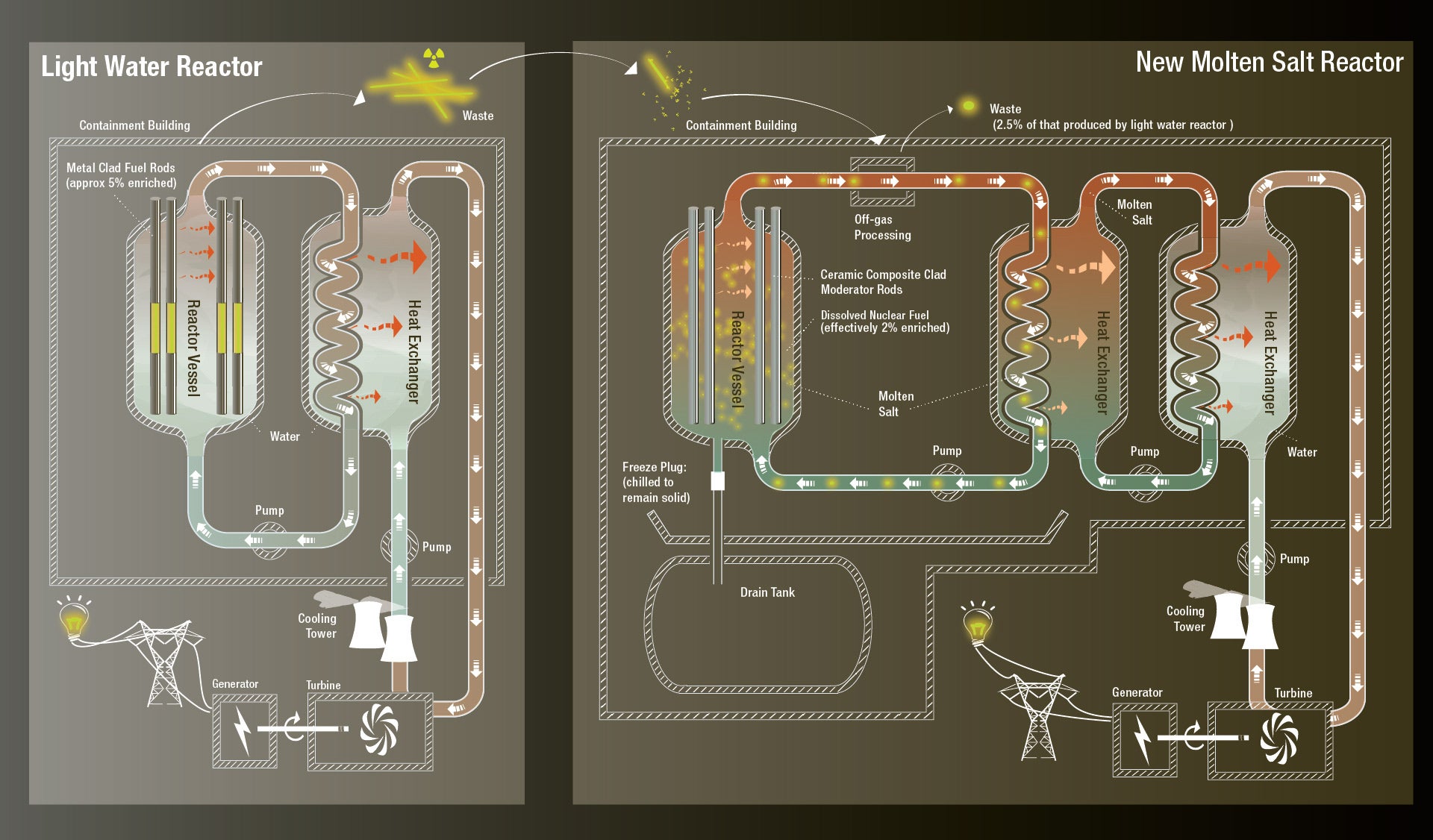
Transatomic, as well as General Fusion and LPP Fusion, represent one branch of the new breed of nuclear pioneers—call them “the young guns.” Also included in this group are companies like Terrestrial Energy in Canada, which is developing an alternative version of the molten salt reactor; Flibe Energy, which is preparing for experiments on a liquid-thorium fluoride reactor; UPower, at work on a nuclear battery; and engineers who are incubating projects not just at MIT but at a number of other universities and labs. Thanks to their work, the next generator of reactors might just be developed by small teams of brilliant entrepreneurs.
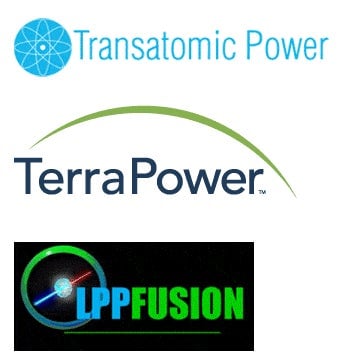
Then there are the more established companies and individuals—call them the “old pros”—who have become players in the advanced nuclear game. These include the engineering giant Fluor, which recently bought a startup out of Oregon called NuScale Power. They are designing a new type of light water “Small Modular Reactor” that is integral (the steam generator is built in), small (it generates about 4% of the output of a large reactor and fits on the back of a truck), and sectional (it can be strung together with others to generate more power). In part because of its relatively familiar light water design, Fluor and a small modular reactor competitor, Babcock & Wilcox, are the only pioneers of the new generation of technology to have received government grants—for $226 million each—to fund their research.
Another of the “old pros,” the well-established General Atomics, in business since 1955, is combining the benefits of small modular reactors with a design that can convert nuclear waste into electricity and also produce large amounts of heat and energy for industrial applications. The reactor uses helium rather than water or molten salt as its coolant. Its advanced design, which they call the Energy Multiplier Module reactor, has the potential to revolutionize the industry.
Somewhere in between is TerraPower. While it’s run by young guns, it’s backed by the world’s second richest man (among others). But even Bill Gates’s money won’t be enough. Nuclear technology is too big, too expensive, and too complex to explore in a garage, real or metaphorical. TerraPower has said that a prototype reactor could cost up to $5 billion, and they are going to need some big machines to develop and test it.
So while Leslie, Mark, and others in their cohort may seem like the latest iteration of Silicon Valley hipster entrepreneurs, the work they’re trying to do cannot be accomplished by Silicon Valley VC-scale funding. There has to be substantial government involvement.
Unfortunately, the relatively puny grants to Fluor and Babcock & Wilcox are the federal government’s largest contribution to advanced nuclear development to date. At the moment, the rest are on their own.
The result is that some of the fledgling enterprises, like General Atomic and Gates’s TerraPower, have decamped for China. Others, like Leslie and Mark’s, are staying put in the United States (for now) and hoping for federal support.
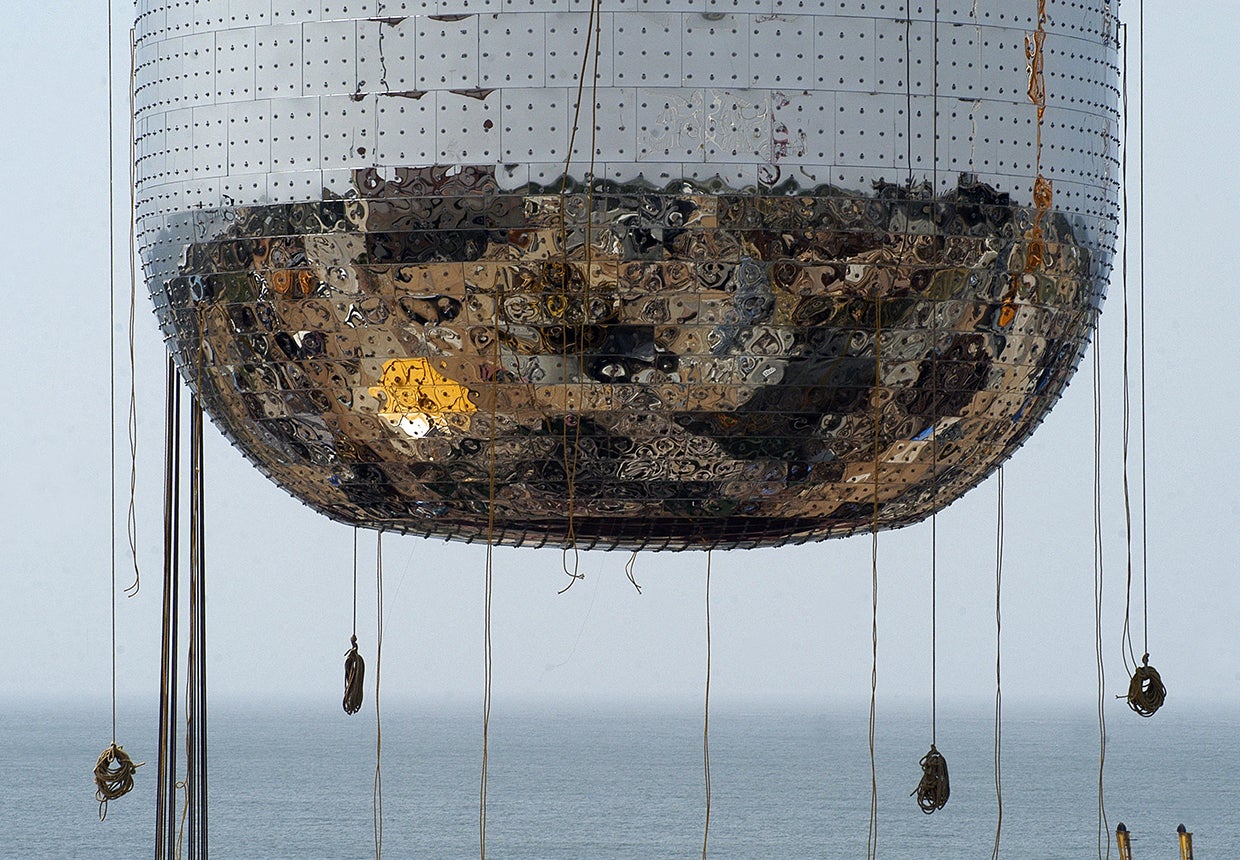
Missing in action: The United States government
There are American political leaders in both parties who talk about having an “all of the above” energy policy, implying that they want to build everything, all at once. But they don’t mean it, at least not really. In this country, we don’t need all of the above—virtually every American has access to electric power. We don’t want it—we have largely stopped building coal as well as nuclear plants, even though we could. And we don’t underwrite it—the public is generally opposed to the government being in the business of energy research, development, and demonstration (aka, RD&D).
In China, when they talk of “all of the above,” they do mean it. With hundreds of millions of Chinese living without electricity and a billion more demanding ever-increasing amounts of power, China is funding, building, and running every power project that they possibly can. This includes the nuclear sector, where they have about 29 big new light water reactors under construction. China is particularly keen on finding non-emitting forms of electricity, both to address climate change and, more urgently for them, to help slow the emissions of the conventional pollutants that are choking their cities in smog and literally killing their citizens.

Since (for better or for worse) China isn’t hung up on safety regulation, and there is zero threat of legal challenge to nuclear projects, plans can be realized much more quickly than in the West. That means that there are not only dozens of light water reactor plants going up in China, but also a lot of work on experimental reactors with advanced nuclear designs—like those being developed by General Atomic and TerraPower.
Given both the competitive threat from China and the potentially disastrous global effects of emissions-induced climate change, the US government should be leaping back into the nuclear race with the kind of integrated response that it brought to the Soviet threat during the Cold War.
But it isn’t, at least not yet. Through years of stagnation, America lost—or perhaps misplaced—its ability to do big, bold things in nuclear science. Our national labs, which once led the world to this technology, are underfunded, and our regulatory system, which once set the standard of global excellence, has become overly burdensome, slow, and sclerotic.
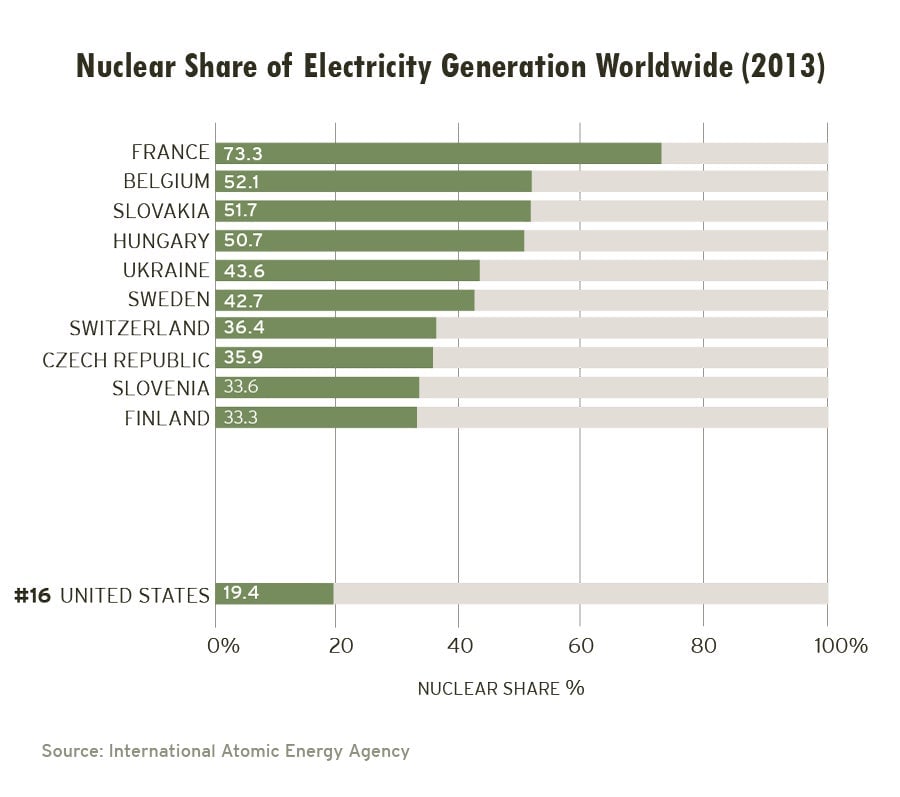
The villains in this story are familiar in Washington: ideology, ignorance, and bureaucracy. Let’s start with Congress, currently sporting a well-earned 14% approval rating. On Capitol Hill, an unholy and unwitting alliance of right-wing climate deniers, small-government radicals, and liberal anti-nuclear advocates have joined together to keep nuclear lab budgets small. And since even naming a post office constitutes a huge challenge for this broken Congress, moving forward with the funding and regulation of a complex new technology seems well beyond its capabilities at the moment.
Then there is the federal bureaucracy, which has failed even to acknowledge that a new generation of reactors is on the horizon. It took the Nuclear Regulatory Commission (the successor to the Atomic Energy Commission) years to approve a design for the new light water reactor now being built in Georgia, despite the fact that it’s nearly identical to the 100 or so that preceded it. The NRC makes no pretense of being prepared to evaluate reactors cooled by molten salt or run on depleted uranium. And it insists on pounding these new round pegs into its old square holes, demanding that the new reactors meet the same requirements as the old ones, even when that makes no sense.
At the Department of Energy, their heart is in the right place. DOE Secretary Ernest Moniz is a seasoned political hand as well as an MIT nuclear physicist, and he absolutely sees the potential in advanced reactor designs. But, constrained by a limited budget, the department is not currently in a position to drive the kind of changes needed to bring advanced nuclear designs to market.
President Obama clearly believes in nuclear energy. In an early State of the Union address he said, “We need more production, more efficiency, more incentives. And that means building a new generation of safe, clean nuclear power plants in this country.” But the White House has been largely absent from the nuclear energy discussion in recent years. It is time for it to reengage.
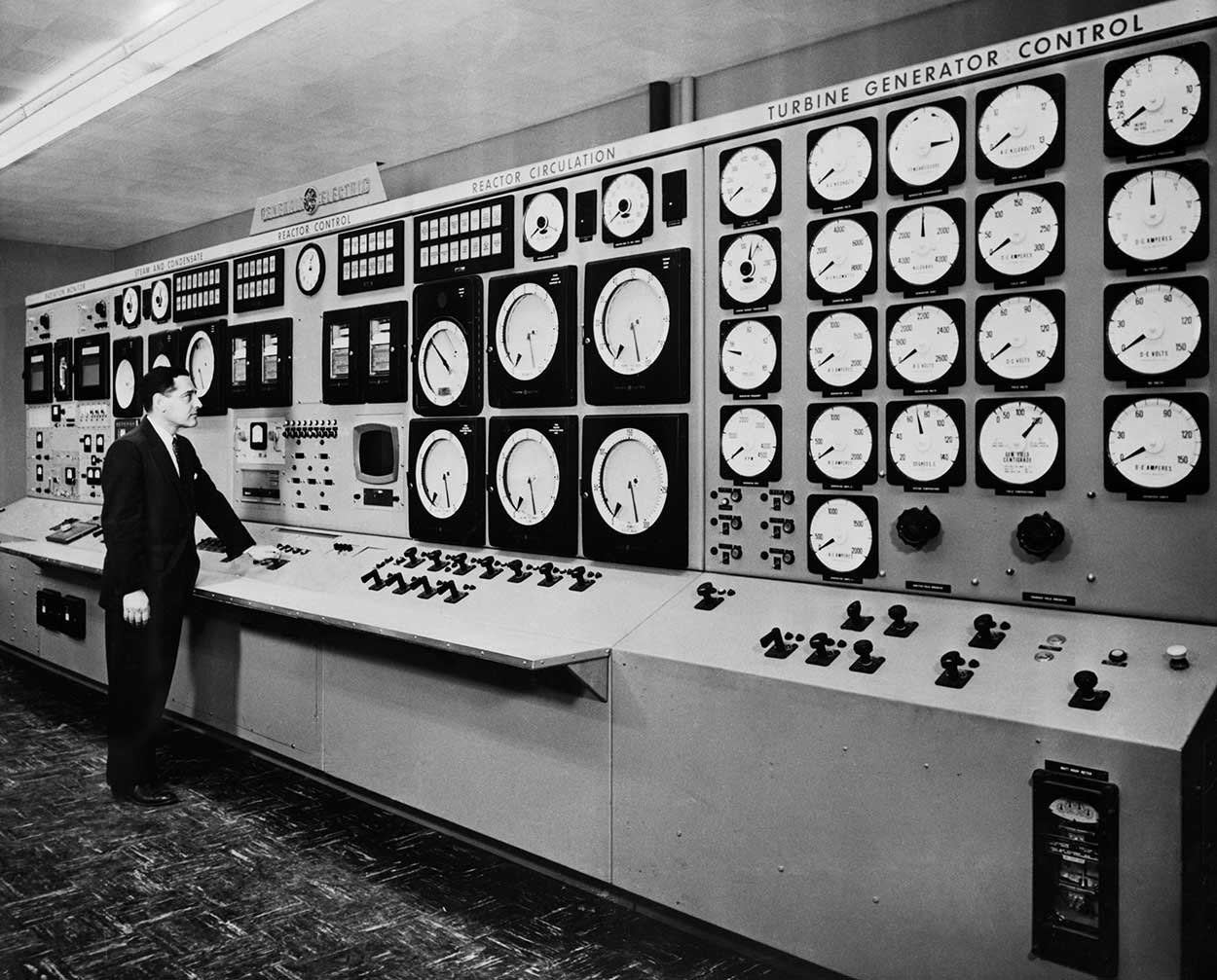
Getting the US back in the race
So what exactly do the people running the advanced nuclear companies need from the US government? What can government do to help move the technology off of their computers and into the electricity production marketplace?
First, they need a practical development path. Where is Bill Gates going to test TerraPower’s brilliant new reactor designs? Because there are no appropriate government-run facilities in the United States, he is forced to make do in China. He can’t find this ideal. Since more than two-thirds of Microsoft Windows operating systems used in China are pirated, he is surely aware that testing in China greatly increases the risk of intellectual property theft.
Thus, at the center of a development path would be an advanced reactor test bed facility, run by the government, and similar to what we had at the Idaho National Lab in 1960s. Such a facility, which would be open to all of the US companies with reactors in development, would allow any of them to simply plug in their fuel and materials and run their tests.
But advanced test reactors of the type we need are expensive and complex. The old one at the Idaho lab can’t accommodate the radiation and heat levels required by the new technologies. Japan has a newer one, but it shut down after Fukushima. China and Russia each have them, and France is building one that should be completed in 2016. But no one has the cutting-edge, truly advanced incubator space that the new firms need to move toward development.
Second is funding. Mark and Leslie have secured some venture capital, but Transatomic will need much more money in order to perform the basic engineering on an advanced test reactor and, eventually, to construct demonstration reactors. Like all startups, Transatomic faces a “Valley of Death” between concept and deployment; with nuclear technology’s enormous costs and financial risk, it’s more like a “Grand Canyon of Death.” Government must play a big role in bridging that canyon, as it did in the early days of commercial nuclear energy development, beginning with the first light water reactor at Shippingport.
Third, they need a complete rethinking of the NRC approach to regulating advanced nuclear technology. How can the brand new Flibe Energy liquid-thorium fluoride reactor technology be forced to meet the same criteria as the typical light water reactor? The NRC must be flexible enough to accommodate technology that works differently from the light water reactors it is familiar with. For example, since Transatomic’s reactor would run at normal atmospheric pressure, unlike a light water reactor, which operates under vastly greater pressure, Mark and Leslie shouldn’t be required to build a huge and massively expensive containment structure around their reactors. Yet the NRC has no provision allowing them to bypass that requirement. If that doesn’t change, there is no way that Transatomic will be able to bring its small, modular, innovative reactors to market.
In addition, the NRC must let these technologies develop organically. They should permit Transatomic and the others to build and operate prototype reactors before they are fully licensed, allowing them to demonstrate their safety and reliability with real-world stress tests, as opposed to putting them through never-ending rounds of theoretical discussion and negotiation with NRC testers.
None of this is easy. The seriousness of the climate change threat is not universally acknowledged in Washington. Federal budgets are now based in the pinched, deficit-constrained present, not the full employment, high-growth economy of the 1950s. And the NRC, in part because of its mission to protect public safety, is among the most change-averse of any federal agency.
But all of this is vital. Advanced nuclear technology could hold a key to fighting climate change. It could also result in an enormous boon to the American economy. But only if we get there first.
Who will own the nuclear power future?
Nuclear energy is at a crossroads. One path sends brilliant engineers like Leslie and Mark forward, applying their boundless skills and infectious optimism to world-changing technologies that have the potential to solve our energy problems while also fueling economic development and creating new jobs. The other path keeps the nuclear industry locked in unadaptable technologies that will lead, inevitably, to a decline in our major source of carbon-free energy.
The chance to regain our leadership in nuclear energy, to walk on the path once trod by the engineers and scientists of the 1950s and ‘60s, will not last forever. It is up to those who make decisions on matters concerning funding and regulation to strike while the iron is hot.
This is not pie-in-the-sky thinking—we have done this before. At the dawn of the nuclear age, we designed and built reactors that tested the range of possibility. The blueprints then languished on the shelves of places like the MIT library for more than fifty years until Leslie Dewan, Mark Massie, and other brilliant engineers and scientists thought to revive them. With sufficient funding and the appropriate technical and political leadership, we can offer the innovators and entrepreneurs of today the chance to use those designs to power the future.
Graphic Design:
Marcia Underwood and Jessica Pavone
Research:
Fred Dews, Thomas Young, Jessica Pavone, Kevin Hawkins
Editorial:
Beth Rashbaum and Fred Dews
Web Development:
Marcia Underwood and Kevin Hawkins
Video:
George Burroughs- Director, Ian McAllister- Technical Director, Sareen Hairabedian and Mark Hoelscher
Directors of Photography, Sareen Hairabedian- Editor, Mark Hoelscher- Color Correction and Graphics, Zachary Kulzer- Sound, Thomas Young- Producer
This post originally appeared at Brookings.